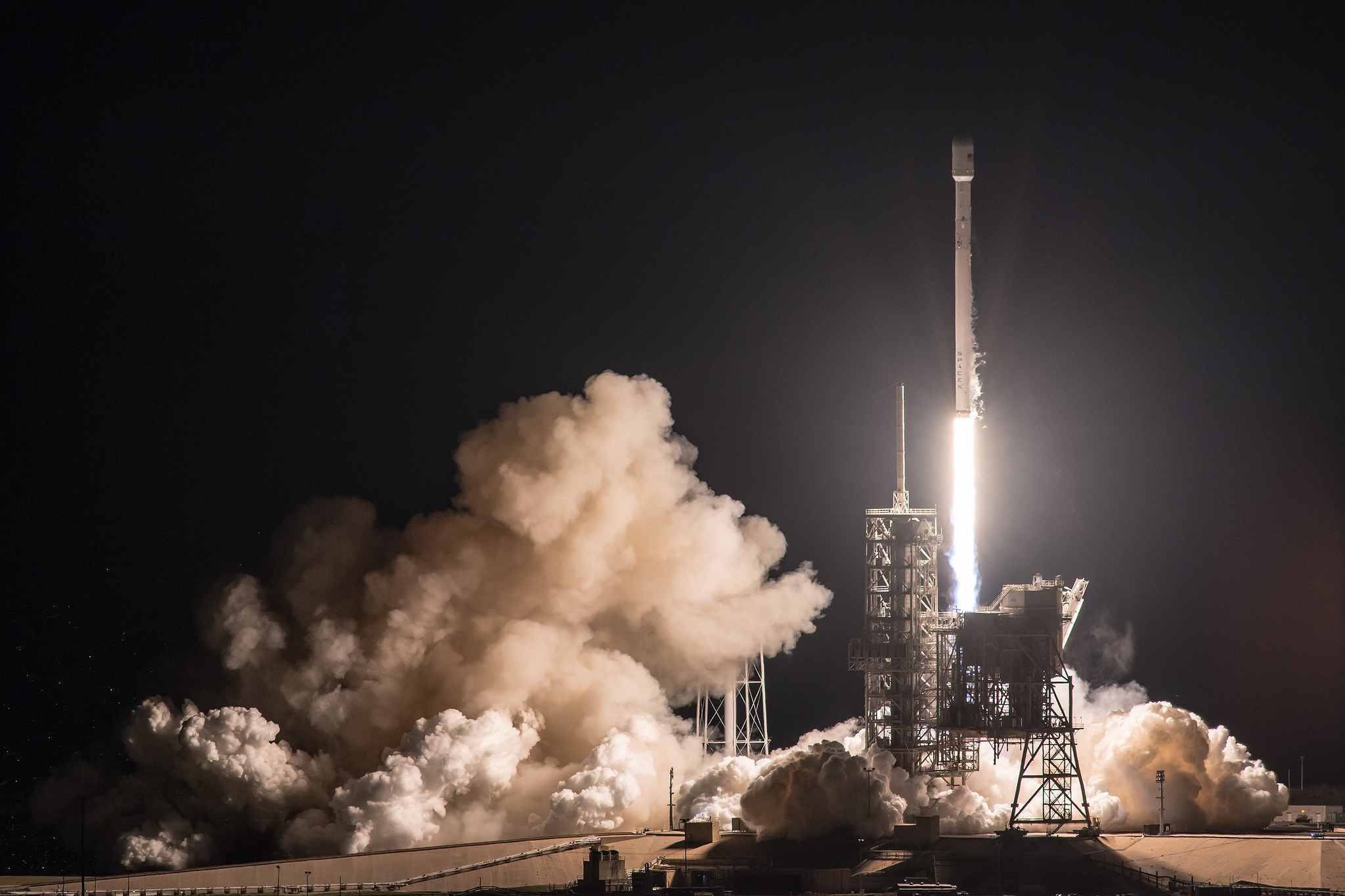SpaceX Rocket Launches EchoStar 23 Communications Satellite Into Orbit

CAPE CANAVERAL, Fla. — A SpaceX Falcon 9 rocket blasted off from NASA's Kennedy Space Center in Florida early Thursday (March 16) to deliver the heavyweight EchoStar 23 communications satellite into a high-altitude orbit, a mission near the limit of the booster’s capability.
High winds scuttled an initial launch attempt Tuesday (March 14), but at 2:00 a.m. EDT (0600 GMT) Thursday, the rocket bolted off its seaside launch pad and soared through clear moonlit skies as it headed into orbit.
The demands of lofting the 6-ton EchoStar 23 spacecraft left the rocket’s first stage without reserve fuel to attempt a powered descent back through the atmosphere and landing. It was the first Falcon 9 to fly sans landing gear in almost two years. [In Photos: SpaceX Falcon 9 Launches huge EchoStar 23 Satellite]
More important to SpaceX than recovering the booster was fulfilling its contract to deliver the 26th member of EchoStar’s fleet into a geostationary transfer orbit some 22,300 miles (35,900 kilometers) above Earth. Initially, the satellite, which was built by Space Systems/Loral, will be positioned above the equator at 45 degrees west longitude to provide broadcast, internet and other communications services to Brazil.

Englewood, Colorado-based EchoStar had hoped to have EchoStar 23 in orbit by the end of 2016, but SpaceX suspended flights for more than four months following an accident at its Cape Canaveral Air Force Station launch pad on Sept. 1.
SpaceX resumed flying on Jan. 14 from Vandenberg Air Force Base in California and on Feb. 19 inaugurated its new Florida pad at Kennedy Space Center — Launch Complex 39A, the same one previously used by NASA’s space shuttles and Saturn V moon rockets. (SpaceX signed a 20-year lease for the pad in 2014.)
Repairs to the nearby Launch Complex 40 at Cape Canaveral Air Force Station, which was heavily damaged in the Sept. 1 accident, are underway. SpaceX president Gwynne Shotwell said the company intends to resume flights from Pad 40 this year.
Breaking space news, the latest updates on rocket launches, skywatching events and more!
Thursday’s launch continues what SpaceX hopes to be a busy year, with flights scheduled every two to three weeks as the company whittles away a backlog of more than 70 missions for NASA and commercial customers. SpaceX on Tuesday also landed a second Air Force contract to launch a GPS satellite.
SpaceX’s next flight, also from Pad 39A, will be the first of a previously flown booster. The customer for that mission, targeted for launch in late March, is Luxembourg-based satellite operator SES.
Thursday’s launch was the 29th successful Falcon 9 flight out of 31 attempted missions since the rocket’s debut in June 2010.
Follow us @Spacedotcom, Facebook or Google+. Originally published on Space.com.
Join our Space Forums to keep talking space on the latest missions, night sky and more! And if you have a news tip, correction or comment, let us know at: community@space.com.

Irene Klotz is a founding member and long-time contributor to Space.com. She concurrently spent 25 years as a wire service reporter and freelance writer, specializing in space exploration, planetary science, astronomy and the search for life beyond Earth. A graduate of Northwestern University, Irene currently serves as Space Editor for Aviation Week & Space Technology.
